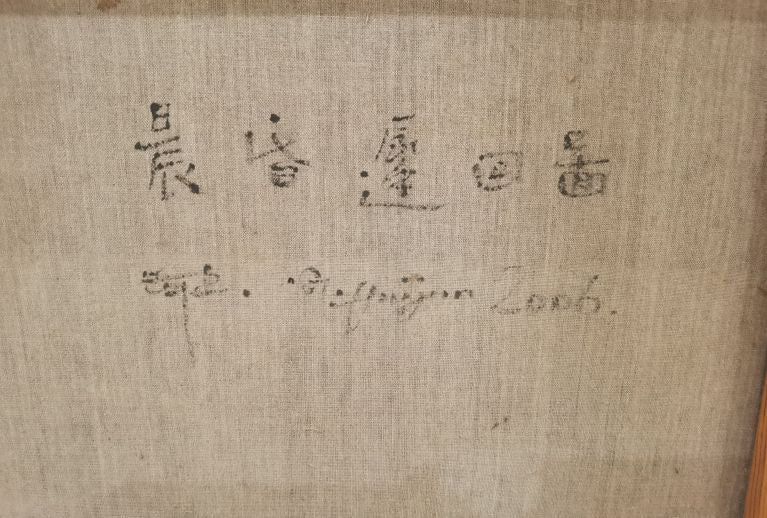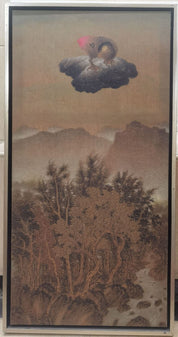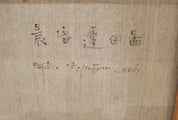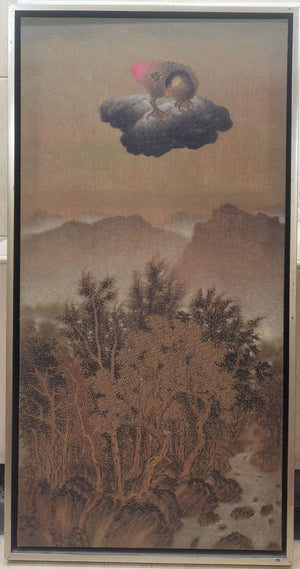Morning and Night Return Diagram
Gao Huijun
Artwork Details
Artwork Description
Title: Morning and Night Return Diagram
Artist: Gao Huijun
Date: 2006
Medium: Oil on canvas
Dimensions: 55.1 x 27.6 in (140 x 70 cm)
Artwork Identification:
This large-format oil painting by Gao Huijun, Morning and Night Return Diagram, presents a surreal fusion of traditional Chinese landscape and whimsical fantasy. A solitary, anthropomorphized bird perches on a dark cloud above a meticulously rendered forest valley, with distant misty mountains fading into a muted sky. The vertical composition and fine brushwork evoke the spirit of classical scroll painting, while the unexpected, floating creature introduces a contemporary, dreamlike narrative.
Artistic Style and Influences:
Renowned for blending literati painting tradition with modern visual poetics, Gao Huijun channels the influence of historical masters such as Bada Shanren and Ni Zan. His unique style is marked by intricate botanical detailing, muted earthy palettes, and fantastical subjects—particularly his signature personified birds. Morning and Night Return Diagram exemplifies his ability to invoke timeless serenity while engaging viewers in imaginative reflection.
Historical Context:
Gao Huijun, born in 1966 in Baoding, Hebei, graduated from the Central Institute of Arts and Crafts in 1992. He has lived and worked in Songzhuang, Beijing’s contemporary art village, since 1994. The early 2000s marked a period of increased experimentation in his work, as he solidified his distinctive visual language that bridges ink painting traditions and surrealist oil techniques.
Provenance:
Provenance documentation can be provided upon request.
Condition and Conservation:
The painting is in very good original condition. Canvas is well-stretched, with no visible restoration or surface damage. Frame is secure and professionally mounted.
Artistic Significance:
Morning and Night Return Diagram stands as a prime example of Gao Huijun’s synthesis of classical composition and whimsical innovation. Its meditative depth and symbolic ambiguity invite philosophical interpretation, positioning the piece as both a homage to Chinese art history and a visionary work of contemporary imagination.







